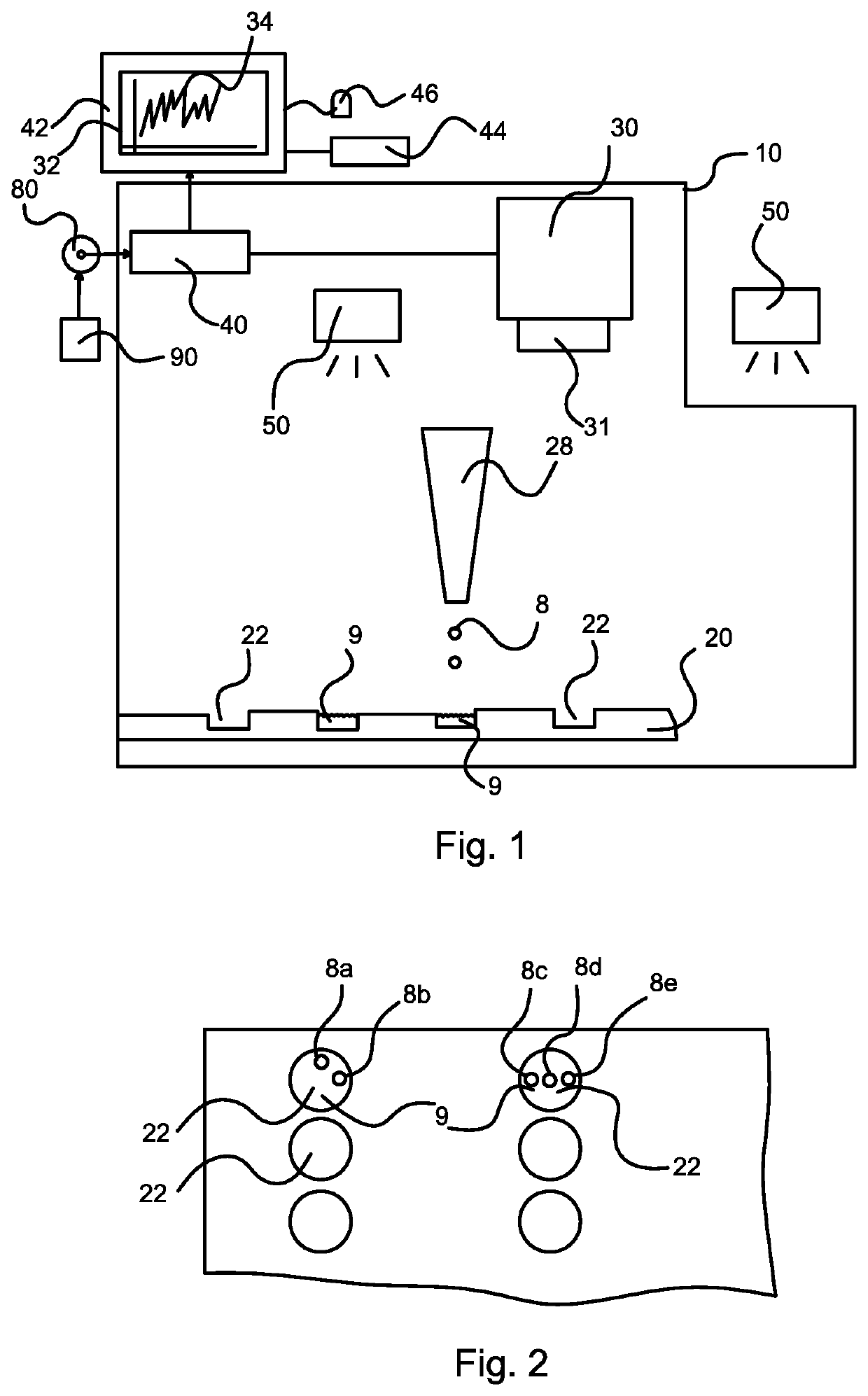Device and method for detecting substances present in biological or chemical samples
a technology of biological or chemical samples and apparatus, which is applied in the direction of measurement devices, instruments, scientific instruments, etc., can solve the problems of small sample fluid quantity available and difficulty in performing all the required analyses, and achieve the effects of increasing the throughput of samples, increasing processing speed, and increasing the degree of automation
- Summary
- Abstract
- Description
- Claims
- Application Information
AI Technical Summary
Benefits of technology
Problems solved by technology
Method used
Image
Examples
Embodiment Construction
[0008]This task is achieved by an apparatus according to claim 1 and a method according to claim 4, a computer program product or computer program according to claim 10 and a data storage device according to claim 11 on which is stored a computer program product. Advantageous further developments of the invention are the subject of the dependent claims.
[0009]In the current invention, an apparatus for detecting substances present in biological or chemical samples comprises a sample carrier such as a microliter plate, in which at least two sample receptacles such as indentations, slots, wells, or cavities etc. are provided, and in which each substance, on reaction with a reagent—preferably present as a liquid—yields an optically detectable signal. The exact form of this receptacle may vary greatly but plays no decisive role for the invention. In practice, there are mostly not only two, but many receptacles, typically arranged in standardized “footprints” or array patterns that are not...
PUM
| Property | Measurement | Unit |
|---|---|---|
| fluorescence | aaaaa | aaaaa |
| spectra | aaaaa | aaaaa |
| color intensity | aaaaa | aaaaa |
Abstract
Description
Claims
Application Information
 Login to View More
Login to View More - R&D
- Intellectual Property
- Life Sciences
- Materials
- Tech Scout
- Unparalleled Data Quality
- Higher Quality Content
- 60% Fewer Hallucinations
Browse by: Latest US Patents, China's latest patents, Technical Efficacy Thesaurus, Application Domain, Technology Topic, Popular Technical Reports.
© 2025 PatSnap. All rights reserved.Legal|Privacy policy|Modern Slavery Act Transparency Statement|Sitemap|About US| Contact US: help@patsnap.com

